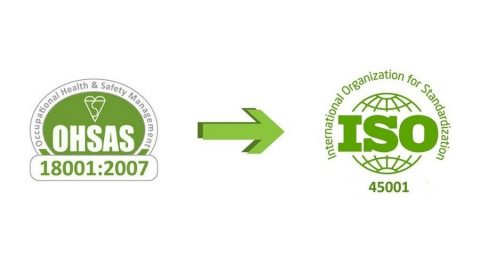
ISO has issued ISO 45001: 2018 – Occupational Safety and Health Management System on 12/03/2018. As a rule, all organizations currently OHSAS 18001 certified will need to move to ISO 45001: 2018 before March 2021, otherwise the OHSAS 18001 certificate will no longer be valid. By March 12, 2021, OHSAS 18001 and all certificates related to it will become obsolete.
Below are 12 steps to convert from OHSAS 18001 to ISO 45001
Step 1 – Defining your organization’s context is a new requirement in ISO 45001. When defining your organization’s context, you must consider internal and external issues. It relates to your company’s purpose, its strategic direction, and its ability to achieve the desired results of the Occupational Health and Safety Management System (OH&S).
Step 2 – List interested parties and stakeholders
This is also a new requirement compared to OHSAS 18001. ISO 45001: 2018 requires understanding who is interested in the OH&S System and the implications of the Occupational Health and Safety Management System. business may be available to these parties.
Step 3 – Review the scope of the OH&S Management System
This requirement will help your organization better define the scope of the OH&S Management System. Although this requirement already exists in an earlier version of the standard (OHSAS 18001). However, this requirement in ISO 45001: 2018 is quite different.
Step 4 – Leadership Participation
The new standard calls for leadership to be proactive and responsible. Instead of a more passive role, sending representatives to participate. According to the new standard, the involvement of leadership in all OH&S requirements is a mandatory one.
Step 5 – Assess risks and opportunities
This is a new and important requirement of the new standard. Risks and opportunities should now be considered for all aspects of the OH&S Management System. Include all compliance requirements and even the organization’s context.
Step 6 – Identify and assess hazards.
Jute is not a new request. The organization should establish an active and active risk identification process.
Step 7 – Determine compliance obligations
Compliance with legal requirements is the cornerstone of the OH&S Management System. The organization should establish a process to identify legal and other requirements that apply to hazards. OH&S and OH&S Management System
Step 8 – Develop an Action Plan
The organization should plan action to address risks and opportunities as well as legal requirements and other requirements. Businesses need action planning to prepare and respond to emergencies.
Step 9 – Set goals and implementation plan for OH&S
The new standard requires the organization to ensure OH&S goals are compatible with the company’s strategic direction. The standard also requires plans to achieve these goals to be created.
Step 10 – Control Document Information
Processes and records are currently defined according to the new term of document information. Converting OHSAS 18001 to ISO 45001 is an opportunity to improve existing document control. The control of documents and records is not required to be recorded. However, creating a Document and Records Control Process is the way businesses often use.
Step 11 – Set up active control
Improving operational control is one of the goals of the new standard. Enterprises need to develop operational control procedures to comply with the new standard, etc.
Step 12 – Assess the effectiveness of the OH&S system
This is the final step of the OHSAS 18001 Conversion Process to ISO 45001. Businesses will need to evaluate the performance of their OH&S management system. You must check if it complies with the standard.
Source: Advisera